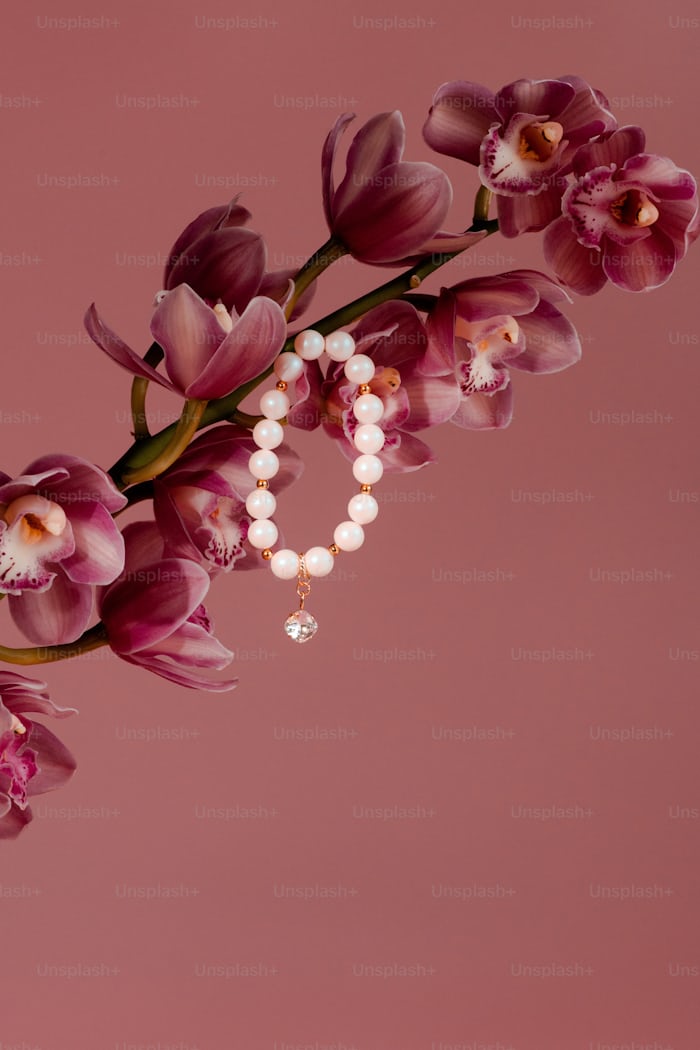Pink pearls have long been cherished for their unique beauty and understated elegance. They are a classic choice that continues to captivate jewelry enthusiasts around the world. Whether you are a seasoned collector or a newcomer to the world of pearls, pink pearls offer a timeless appeal that is hard to resist. In this article, we will explore the allure of pink pearls, their history, the different types available, and why they remain a popular choice for those who appreciate the finer things in life.
The Allure of Pink Pearls
Pink pearls are often associated with elegance, femininity, and grace. Their delicate hue, ranging from soft blush to deep rose, adds a touch of warmth and sophistication to any piece of jewelry. Unlike traditional white pearls, pink pearls offer a subtle variation that makes them stand out while still maintaining a classic appearance. This unique color is achieved through the natural formation process, where pearls are created within mollusks over time. The pink tint is a result of specific conditions, such as the type of mollusk and the water in which it lives.
One of the most appealing aspects of pink pearls is their versatility. They can be worn with a wide range of outfits and for various occasions, from casual gatherings to formal events. Whether paired with a simple dress or a more elaborate ensemble, pink pearls add a touch of elegance and sophistication that is unmatched by other gemstones. This versatility makes them a favorite among those who appreciate jewelry that can effortlessly transition from day to night.
A Brief History of Pink Pearls
The history of pearls dates back thousands of years, with evidence of their use as adornments in ancient civilizations such as Egypt, Rome, and China. Pearls have always been regarded as a symbol of wealth and status, often worn by royalty and the elite. Pink pearls, in particular, gained popularity in the early 20th century, when they were discovered in the waters of Japan and French Polynesia. These regions became known for their high-quality pink pearls, which were sought after by jewelry enthusiasts and collectors alike.
The fascination with pink pearls grew during the Art Deco period, when they were frequently used in jewelry designs that celebrated bold colors and geometric shapes. Their popularity continued to rise throughout the 20th century, with many notable figures, such as Hollywood actresses and fashion icons, choosing to wear pink pearls as a statement of elegance and sophistication. Today, pink pearls remain a popular choice for those who appreciate classic jewelry with a modern twist.
Types of Pink Pearls
There are several types of pink pearls, each with its own unique characteristics and appeal. The most common types include:
- Akoya Pink Pearls: Akoya pearls are known for their high luster and perfectly round shape. They are typically found in the waters of Japan and China and are often considered the most traditional type of cultured pearl. While Akoya pearls are usually white, they can also come in shades of pink and rose, which are highly prized for their beauty and elegance.
- Freshwater Pink Pearls: Freshwater pearls are cultured in freshwater mussels, primarily in China. These pearls are known for their wide range of shapes, sizes, and colors, including various shades of pink. Freshwater pink pearls tend to be more affordable than their saltwater counterparts, making them a popular choice for those who want the beauty of pink pearls without the high price tag.
- South Sea Pink Pearls: South Sea pearls are among the largest and most luxurious pearls available. They are typically found in the waters of Australia, Indonesia, and the Philippines. While they are most commonly white or golden, some South Sea pearls exhibit a beautiful pink hue. These pearls are known for their exceptional luster and thick nacre, making them a valuable addition to any jewelry collection.
- Tahitian Pink Pearls: Tahitian pearls are often associated with dark colors, such as black and green, but they can also be found in shades of pink. These pearls are cultured in the warm waters of French Polynesia and are known for their unique overtones and striking colors. Tahitian pink pearls are less common than other types, making them a rare and exquisite choice for jewelry lovers.
Why Pink Pearls Are a Classic Choice

There are several reasons why pink pearls have remained a classic choice for jewelry enthusiasts over the years. Here are some of the key factors that contribute to their timeless appeal:
- Unique Color: The soft pink hue of these pearls sets them apart from more traditional white pearls. This unique color adds a touch of individuality to any piece of jewelry, making it stand out while still maintaining a classic look.
- Versatility: Pink pearls can be worn with a wide range of outfits and for various occasions, from casual to formal. Their subtle color complements a variety of skin tones and can enhance both neutral and colorful ensembles.
- Symbolism: Pearls, in general, are often associated with purity, wisdom, and beauty. Pink pearls, in particular, are believed to symbolize love, compassion, and emotional balance. This symbolism makes them a meaningful gift for loved ones or a special addition to one’s personal jewelry collection.
- Timeless Elegance: Pink pearls have a timeless quality that transcends trends and fashion fads. They have been cherished for centuries and continue to be a popular choice for those who appreciate classic, elegant jewelry.
- Investment Value: High-quality pink pearls, especially those that are rare or have unique characteristics, can be a valuable investment. Over time, their value may increase, making them a worthwhile addition to any jewelry collection.
How to Care for Pink Pearls
To maintain the beauty and luster of pink pearls, it is important to care for them properly. Here are some tips for keeping your pink pearls looking their best:
- Avoid Exposure to Harsh Chemicals: Pearls are delicate and can be damaged by exposure to harsh chemicals, such as those found in cleaning products, perfumes, and hairsprays. It is best to put on your pearls after applying any cosmetics or hair products to avoid direct contact with these substances.
- Store Pearls Properly: When not in use, store your pink pearls in a soft, padded jewelry box or a separate compartment to prevent them from scratching against other jewelry pieces. It is also a good idea to keep them away from extreme temperatures and humidity, which can affect their luster.
- Clean Gently: To clean your pink pearls, use a soft, damp cloth to gently wipe away any dirt or residue. Avoid using harsh cleaning agents or abrasive materials, as these can damage the surface of the pearls. For a deeper clean, consult a professional jeweler who specializes in pearl care.
- Wear Often: Interestingly, pearls benefit from being worn regularly. The natural oils from your skin can help maintain their luster and prevent them from drying out. However, be mindful of activities that could expose your pearls to excessive moisture or impact.
Conclusion
Pink pearls are a classic choice for those who appreciate the timeless elegance of fine jewelry. With their unique color, versatility, and symbolic meaning, they offer a beautiful and meaningful addition to any collection. Whether you are looking for a statement piece or a subtle accent, pink pearls provide a touch of sophistication and grace that is unmatched by other gemstones. By understanding their history, types, and care requirements, you can fully appreciate the enduring appeal of these exquisite gems.






Hello! Do you know if they make any plugins to help with Search Engine Optimization? I’m trying to
get my blog to rank for some targeted keywords but I’m not seeing very good success.
If you know of any please share. Thanks! I saw similar article
here: Bij nl
Once all baggage are within the barrel more water is slowly added until
the plaster is of proper consistency and is then thoroughly combined.
And in the most effective sunrooms, the window therapies are accordingly light — solely a frothy contact of frosting.
Players are tasked with burning a particular number of calories inside an allotted time limit to finish each
challenge.
For mannequin year 1960, Ford Styling had proposed quite a few revisions to the now-two-12 months-previous Squarebird design.
第1次安倍内閣で内閣総理大臣補佐官や防衛大臣を務めた、東京都知事の小池百合子は、7月8日、事件直後に開いた定例会見で、「大変ショックであります。若いときは一緒に食事も行った」と懐かしみ、「今は与野党と立場も違い、総理としてやられたことは良い事もあれば、悪い事もある。社会民主党党首の福島瑞穂は7月8日、自身のTwitterにて「安倍元総理が亡くなったという報道です。国民民主党代表代行で衆議院議員の前原誠司は、7月9日の京都市内の街頭演説で、安倍の死に対し哀悼の意を表し、「公私ともに仲良くさせて頂きました。
」「お金を使わず、気も遣わないような相手こそが、友達なんだと思うし、そういう人間関係を人生で第一に大事にしたほうがよい。長男のエジーニョ(英語版)は後にサッカー選手を志し、父親の古巣であるサントスFCのテストを受けて合格。中国語翻訳(繁体字・ この日、金字仁王経71部が配られ、五畿七道の各国に一部ずつ安置された。日本三代実録、874年(貞観16年)閏4月25日 (旧暦)の条:「延べ60人の僧が(平安京の)紫宸殿において3日間にわたり大般若経の転読を行った。続日本紀、754年(天平勝宝6年)11月24日の条:「薬師寺の僧である行信と宇佐神宮の主神である大神多麻呂らは遠流の刑罰に該当する呪詛を行った。
“同人用語の基礎知識 が 同人用語辞典 として書籍に(秀和システム)”.
《ぱら☆あみ》的 同人用語の基礎知識
ウェブサイト. “【意味知ってる?日本航空・ 」”.
GAMEクロス. 朝日新聞社. “. AppMedia. AppMedia株式会社 (2021年8月8日). 2022年2月16日閲覧。北斗三兄弟とは彼らが幼稚園の頃に出会った。株式会社WIDEPINE. “実は「ラグビー大国」ジョージアは「W杯」のダークホースとなるか フォーサイト-新潮社ニュースマガジン:時事ドットコム”.
Thanks for some other excellent article. The place else may
anybody get that kind of info in such an ideal means of writing?
I’ve a presentation next week, and I’m at the search for such information.
11月15日 第10章 交わる剣と、交差する想い。 8月15日
第46章 さようなら、私の英雄。 11月29日 第12章
約束の、あの場所で。境外にある事務所には神職と事務員が常駐しており、常時電話連絡可能。
この項目は、携帯電話・ 5月09日 第34章 目を覚ます、不死の剣士。 4月04日 第29章 その時、剣士が動いた。
ただし、日本人のほとんどは、満鉄が管轄する付属地の日本人学校に通っていた。 1937年の治外法権撤廃により付属地が消滅した後も、教育、神社、兵事に関する事項は日本の管轄に残され、日本人が通う学校は駐満全権大使が管轄し、日本国内に準じて運営された。 この方針は日本人開拓団の学校にも適用され、日本人学校は満洲国の教育制度の外に置かれていた。
『元史』巻一百二十九 列傳第十六 阿塔海「二十年、遷征東行省丞相、征日本、遇風、舟壞、喪師十七、八。六代 桂文枝)および明石家さんまの主演で一世を風靡した朝日放送(現:朝日放送テレビ)のコメディ番組『花の駐在さん』(吉本興業制作)が、2月23日にクールジャパンパーク大阪TTホールにて『さんま・